Distribution Records
PDF
Vetting Levels |
|
Adult phenology:
High Mountains (HM) ≥ 4,000 ft.
Low Mountains (LM) < 4,000 ft.
Piedmont (Pd)
Coastal Plain (CP)
Click on graph to enlarge
|
 |
|
| synonym | |
| taxonomic_comments |
Described in 1757 as vatius from the Latin vati, which can mean either "bow-legged" or "prophet." It was originally placed in the genus Araneus (hence the initial "vatius" for gender agreement), but back then, almost all spiders were called "Araneus something-or-other." In 1804, it was placed in the genus Misumena (meaning "being hated"), only to bounce around nomenclaturally with >20 names for the better part of that century. It was ultimately restored to Misumena in 1872, where it has remained with only trivial exception. |
| species_comment |
Adult M. vatia have been shown to change colors to match the flowers where they rest, motionless, in ambush of their prey: Their color shifting is not rapid, but can take days. |
| id_comments |
Similar in appearance to Misumenoides formosipes (q.v.), but Misumenoides has a "carina," i.e. a prominent, transverse, white ridge on the clypeus, while Misumena vatia does not. |
| total_length |
Females 6.0-9.0mm, males 2.9-4.0mm |
| structural_features |
|
| silk_web |
None. It is an ambush hunter. |
| fld_guide_descriptions |
The female prosoma can be white to yellow, sometimes with broad bands of green to brown. The eye region is usually yellow to orange. The female opisthosoma is yellow to white. When yellow, a pair of green bands may start near the pedicel and run along the lateral edge to about halfway down. If the opisthosoma is white, pink to red bands may be located in this area. The legs are white to yellow. The male prosoma is purple brown, sometimes with a broad pale median band. The eye region is white to pink. The opisthosoma is cream white to yellow, with brown spots on either side of the midline toward the posterior; there is a dark ring around the lateral edges of brown to red. The first two pairs of legs are purple brown, and sometimes there is pale banding on the distal segments. The legs are proportionally much longer in the males than the females. The other legs are yellow. The spiders use the spines on the first two pairs of legs to help them grab their prey. (Rose, 2022) |
| online_photos |
|
| prey |
Mostly insect visitors to blooming flowers—including those much larger than itself. |
| predators |
|
| behavior |
|
| distribution_reference |
Bradley, Richard A. 2013. Common Spiders of North America. 1st Edition. University of California Press; Berkley & Los Angeles, California, USA.
|
| technical_reference |
Comstock, J. H. (1940). The spider book, revised and edited by W. J. Gertsch. Cornell Univ. Press, Ithaca, 727 pp. |
| adult_id | 1 identifiable by photo 2 identifiable by photo of specific features and/or supplementary info 3 identifiable from specimen only |
| abundance |
|
| distribution_comments |
Found nationwide, well into Canada and North to Alaska. |
checklist_mt_high
>=4,000 ft. | |
checklist_mt_low
<4,000 ft. | |
checklist_pd
Piedmont | |
checklist_cp
Coastal Plain | |
| habitat |
old field, forest |
| observation_methods |
|
| state_protection |
|
| NHP_ranks |
|
| NHP_status |
|
| status_comments |
|
Photo Gallery for Misumena vatia goldenrod crab spider |
 | Recorded by: Mark Basinger
Madison Co.
Comment: | 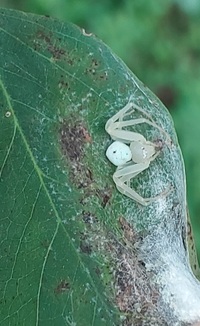 | Recorded by: Mark Basinger
Wilson Co.
Comment: 4 babies and 1 adult female.
Rolled up in black locust leaflet. |
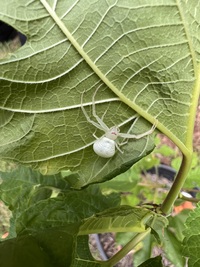 | Recorded by: Lauren Demko
Johnston Co.
Comment: | 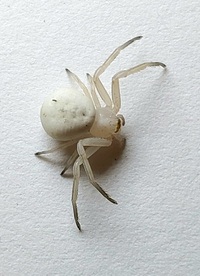 | Recorded by: Mark Basinger, Jim Petranka, and Becky Elkin
Mitchell Co.
Comment: |
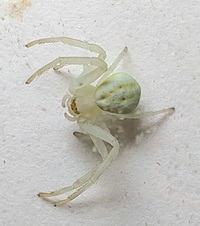 | Recorded by: Mark Basinger
Mitchell Co.
Comment: |  | Recorded by: Mark Basinger
Rowan Co.
Comment: |
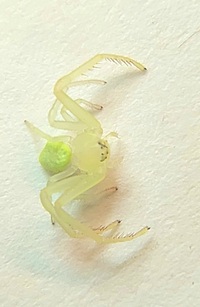 | Recorded by: Mark Basinger and Donald Zepp
Johnston Co.
Comment: | 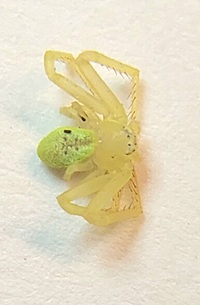 | Recorded by: Mark Basinger
Wayne Co.
Comment: |
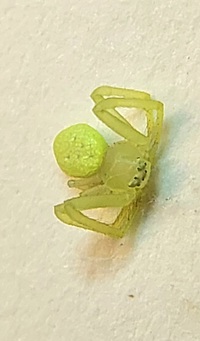 | Recorded by: Mark Basinger
Richmond Co.
Comment: | 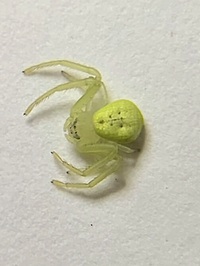 | Recorded by: Mark Basinger
McDowell Co.
Comment: |
 | Recorded by: Mark Basinger
McDowell Co.
Comment: | 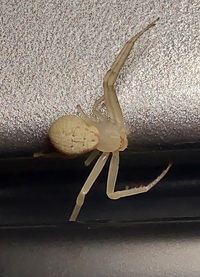 | Recorded by: Mark Basinger
Wilson Co.
Comment: |
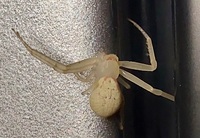 | Recorded by: Mark Basinger
Wilson Co.
Comment: | 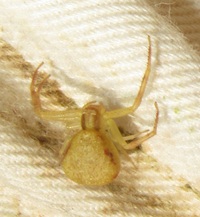 | Recorded by: Brian Bockhahn
Avery Co.
Comment: |
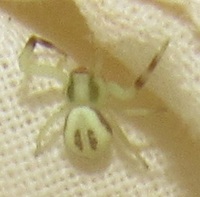 | Recorded by: Brian Bockhahn
McDowell Co.
Comment: | 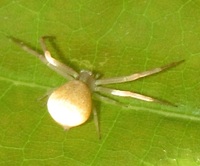 | Recorded by: Brian Bockhahn
McDowell Co.
Comment: |
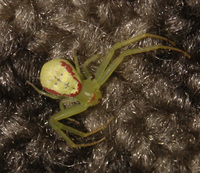 | Recorded by: Vin Stanton
Buncombe Co.
Comment: | 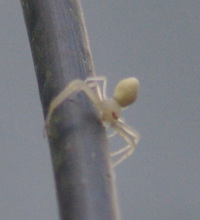 | Recorded by: Vin Stanton
Buncombe Co.
Comment: not great pic, best I could get |
 | Recorded by: Vin Stanton
Buncombe Co.
Comment: |  | Recorded by: Barbara McRae
Macon Co.
Comment: |
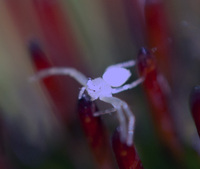 | Recorded by: Barbara McRae
Macon Co.
Comment: It was on a coneflower | 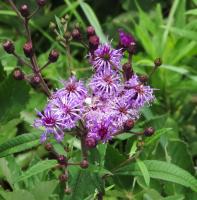 | Recorded by: C. Taunton
Wake Co.
Comment: NCMA |
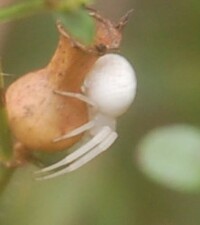 | Recorded by: Tracy S. Feldman
Scotland Co.
Comment: not sure about this one, but this was my best guess. | 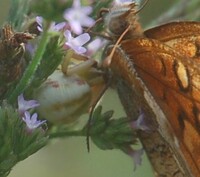 | Recorded by: Tracy S. Feldman
Scotland Co.
Comment: in Carolina Bay--could this be Misumena formosipes? |
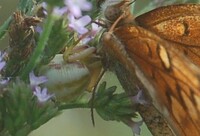 | Recorded by: Tracy S. Feldman
Scotland Co.
Comment: in Carolina Bay--could this be Misumena formosipes? | 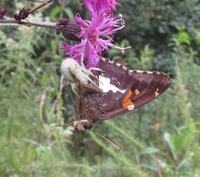 | Recorded by: Brian Bockhahn
Rockingham Co.
Comment: |
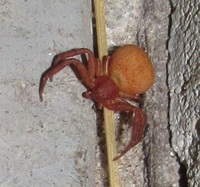 | Recorded by: Brian Bockhahn
Bladen Co.
Comment: | 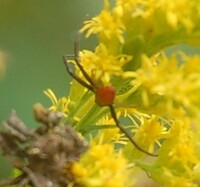 | Recorded by: Tracy S. Feldman
Scotland Co.
Comment: male |
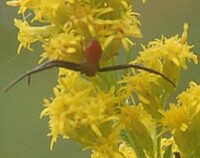 | Recorded by: Tracy S. Feldman
Scotland Co.
Comment: male | 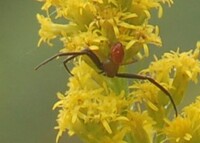 | Recorded by: Tracy S. Feldman
Scotland Co.
Comment: male |
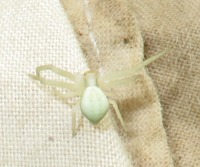 | Recorded by: Brian Bockhahn
Avery Co.
Comment: | 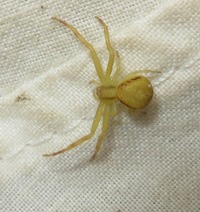 | Recorded by: Brian Bockhahn
Watauga Co.
Comment: |
 | Recorded by: Brian Bockhahn
Watauga Co.
Comment: | 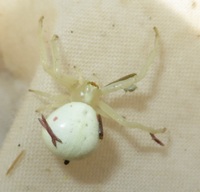 | Recorded by: Brian Bockhahn
Avery Co.
Comment: |
|